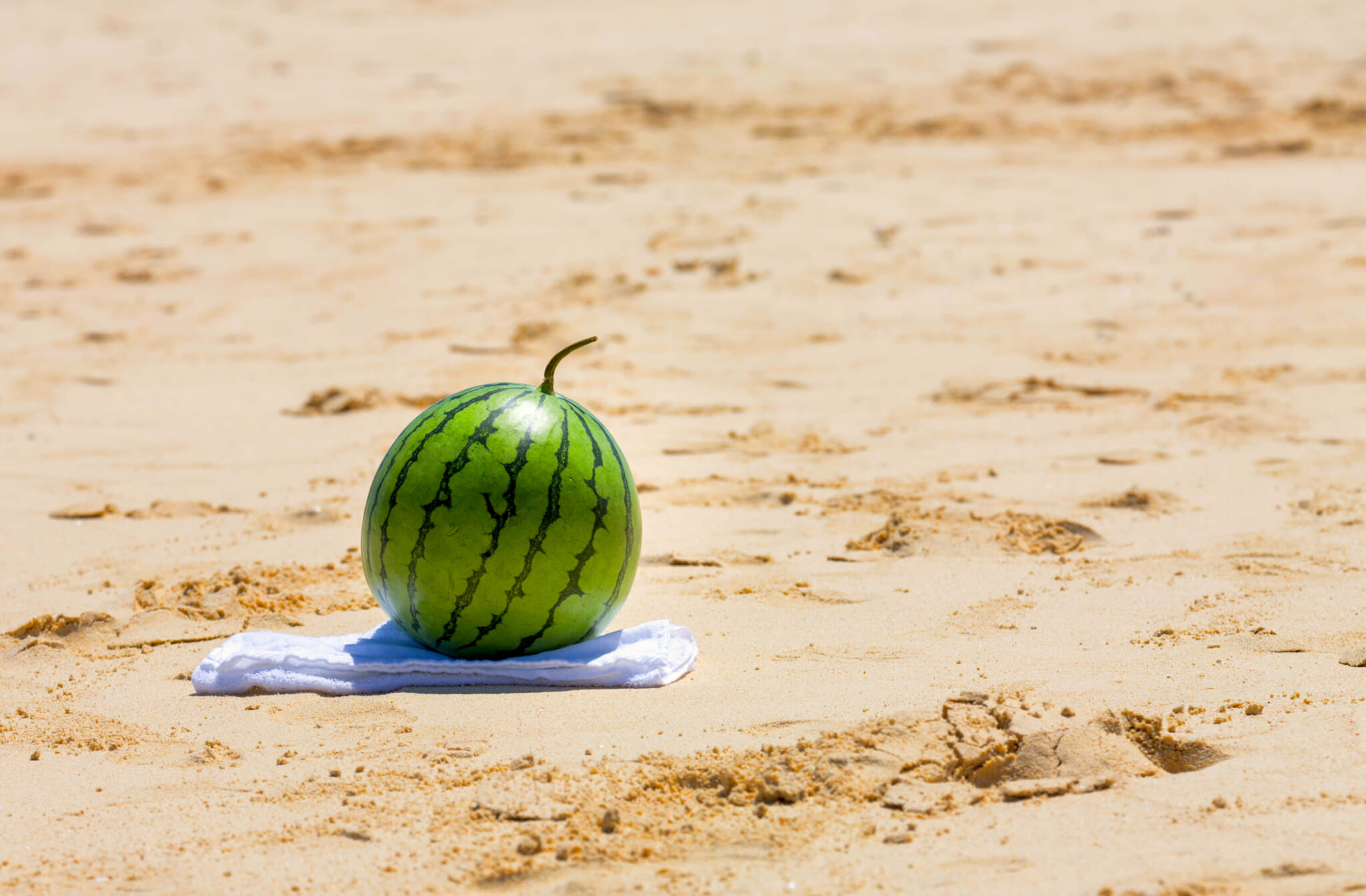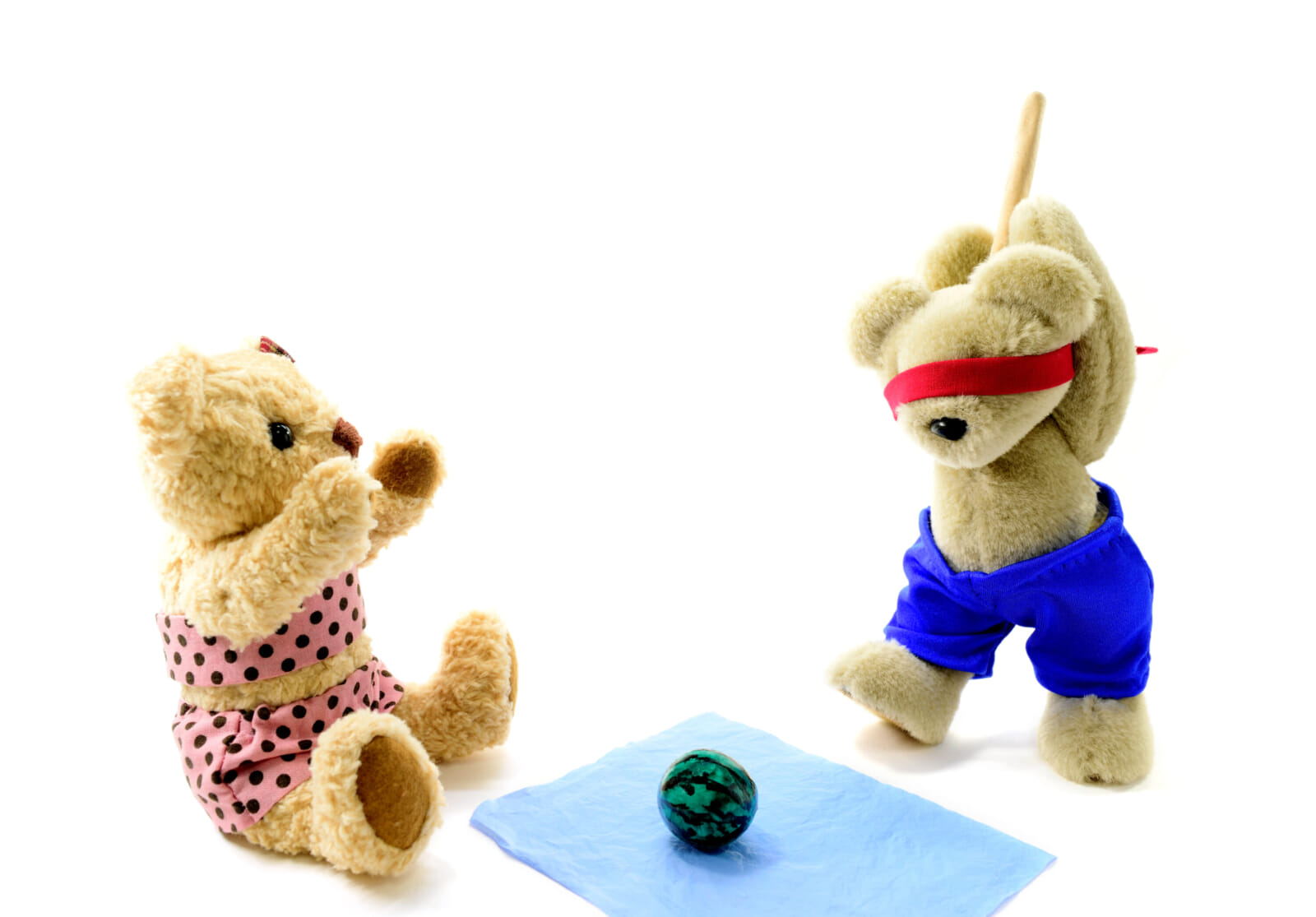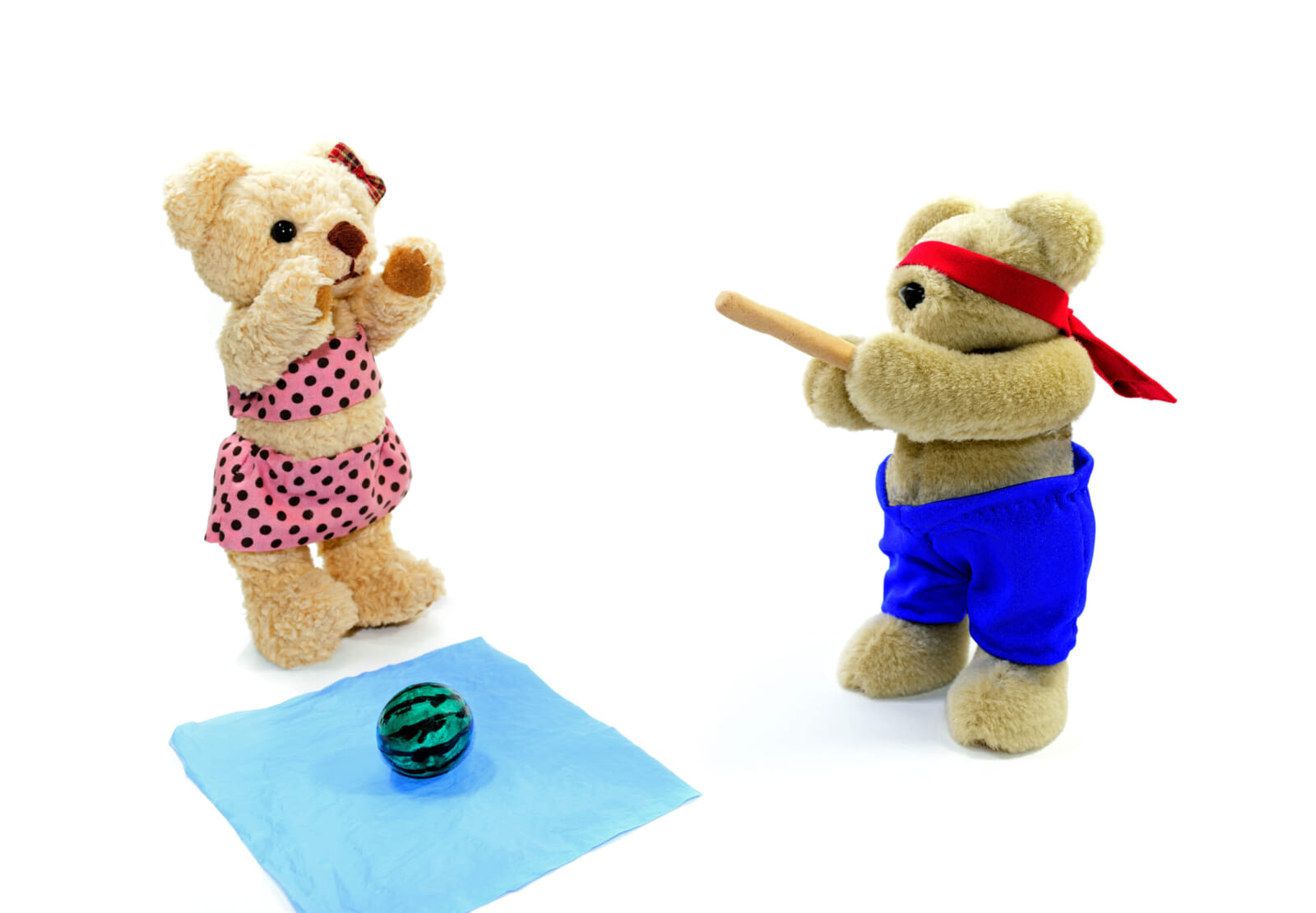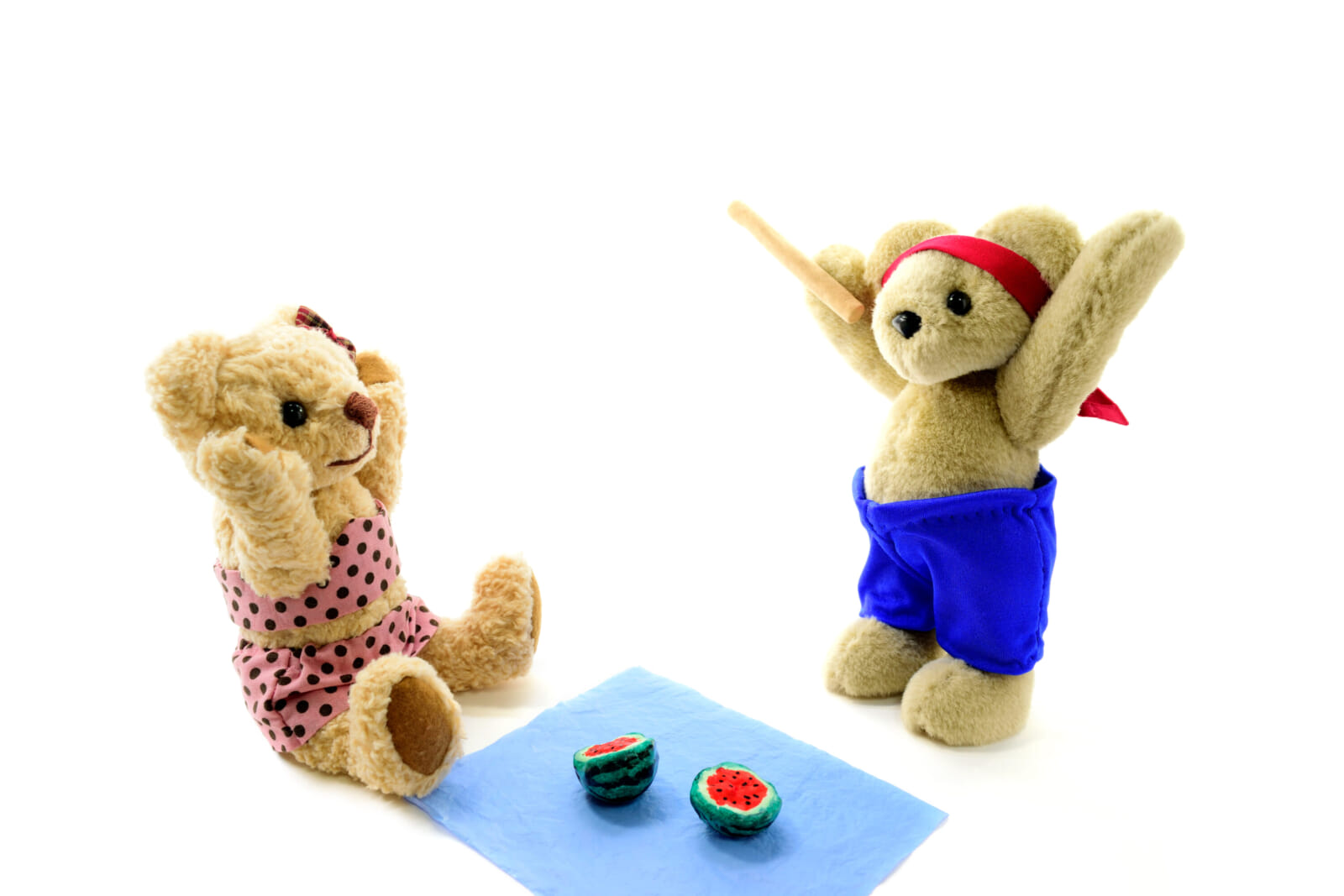Japanese watermelons are famed across the world for their fantastically bizarre shapes and deep, sweet flavors. When they come into season from June onwards, watermelons (suika in Japanese) make for the perfect summertime snacks. The game associated with the fruit, suikawari, or watermelon smashing, provides enjoyment and refreshment in one go. Let’s have a look at the history of it and how to play it.
What is Suikawari?
Suikawari is a traditional Japanese summertime activity. Usually taking place on a beach or on a sports field, it involves participants trying to smash open a watermelon while blindfolded. Often, one or more teams will have a go. Once the watermelon is successfully split, it is divided out for everyone to enjoy.
A popular group game for the beach, suikawari is easy to prepare. Most Japanese people have played suikawari at least once in their lifetime. Many even more so. For adults, smashing open a watermelon is a great way to end a barbecue.

How to Play Suikawari
To take part in suikawari, first someone must be picked to do the smashing. There is no set way to pick, and often a few people might have a go to avoid any fighting. The smasher gets blindfolded and then spun around at least three times before taking aim, encouraged by supporters close by.
- Pick people to be the smasher, referee and cheerers.
- Blindfold the smasher and give them the hitting implement.
- Spin the smasher around a few times and set three minutes on the clock.
- Start the clock and the cheerers have to guide the dizzy smasher with their voices to the watermelon to smash it.
- The referee judges when the watermelon is sufficiently smashed and the clock is stopped.
- Break or cut the watermelon and enjoy it.
If the smasher doesn’t manage to break the watermelon within three minutes, the turn can go to another person to have a go.
History of Suikawari
The origins of suikawari are unknown, with theories relating to it being a fancy way of sword drawing for the killing of criminals in China. One thing for sure is that with a game that has been around and evolved so much, at one point there were many house rules to go with it. One group playing with another would lead to disagreements about specifics, such as how far away the smasher had to be from the watermelon, who gets to be the referee, and so on.
In 1991, half in jest, half with deadly seriousness, the Japanese Agricultural Society made a Watermelon Smashing Society. Partly to promote the consumption of watermelons, it set out its official game rules. This settled many arguments. Find the game rules below.
Rules of Suikawari
The Suikawari Rules, according to the official Japanese Watermelon Smashing Society:
Playing the Game
- The area in which the game is played must be big and not too hard. The society suggests either a sandy beach or a grassy field.
- The smasher must start between 5 and 7 meters away from the watermelon.
Preparation
- Before playing, the object with which the watermelon will be smashed should be chosen. This should be no more than 5 centimeters wide and up to 1.2 meters long.
- Use a towel or tenugui for a blindfold.
- The watermelon should be a Japanese-grown one.
Players
- There should be one person who is the designated smasher, and one referee who starts the clock and decides when the watermelon is fully smashed. The other people are supporters. They are essentially the eyes of the blindfolded player.
Choosing the Referee
Even though the smasher can be anyone, the referee must be someone who is proven to be passionate about watermelons. To prove their passion, wannabe referees must answer a number of questions. The questions are as follows:
- Where is the sweetest part of a watermelon? The middle part.
- How much of an average watermelon is made of water? 85% to 91%.
- How can you tell if a watermelon will be tasty? It has clearly defined stripes and makes a thud when hit with the palm of your hand.
- On average, how many seeds are in a watermelon? Between 400 and 500.
- Where does the watermelon originate from? Africa.
The person who gets the most correct answers may be the watermelon-smashing referee. Even if there is no competition, the referee should answer at least three questions correctly.
Spinning Specifics
- The smasher must be spun around clockwise.
- Once the smasher has been spun around, they must wait before they start hitting. The referee will let them know when they can begin.
Supporter Rules
- The supporters must only say phrases to help the smasher. They are not allowed to stand behind the watermelon, or say anything that might harm the smasher.
Points
| Conditions | Number of Points |
| Miss | 0 |
| Hit | 1 |
| Hit (cracked) | 2-4 |
| Hit (split to red flesh) | 5-10 |
The Winner
- The winning team gets first dibs on the watermelon. The losers may have whatever remains.
The watermelon smash, suikawari, watermelon split — whatever your preferred name for the activity, makes a great game for the beach or any other open space. Give it a try.
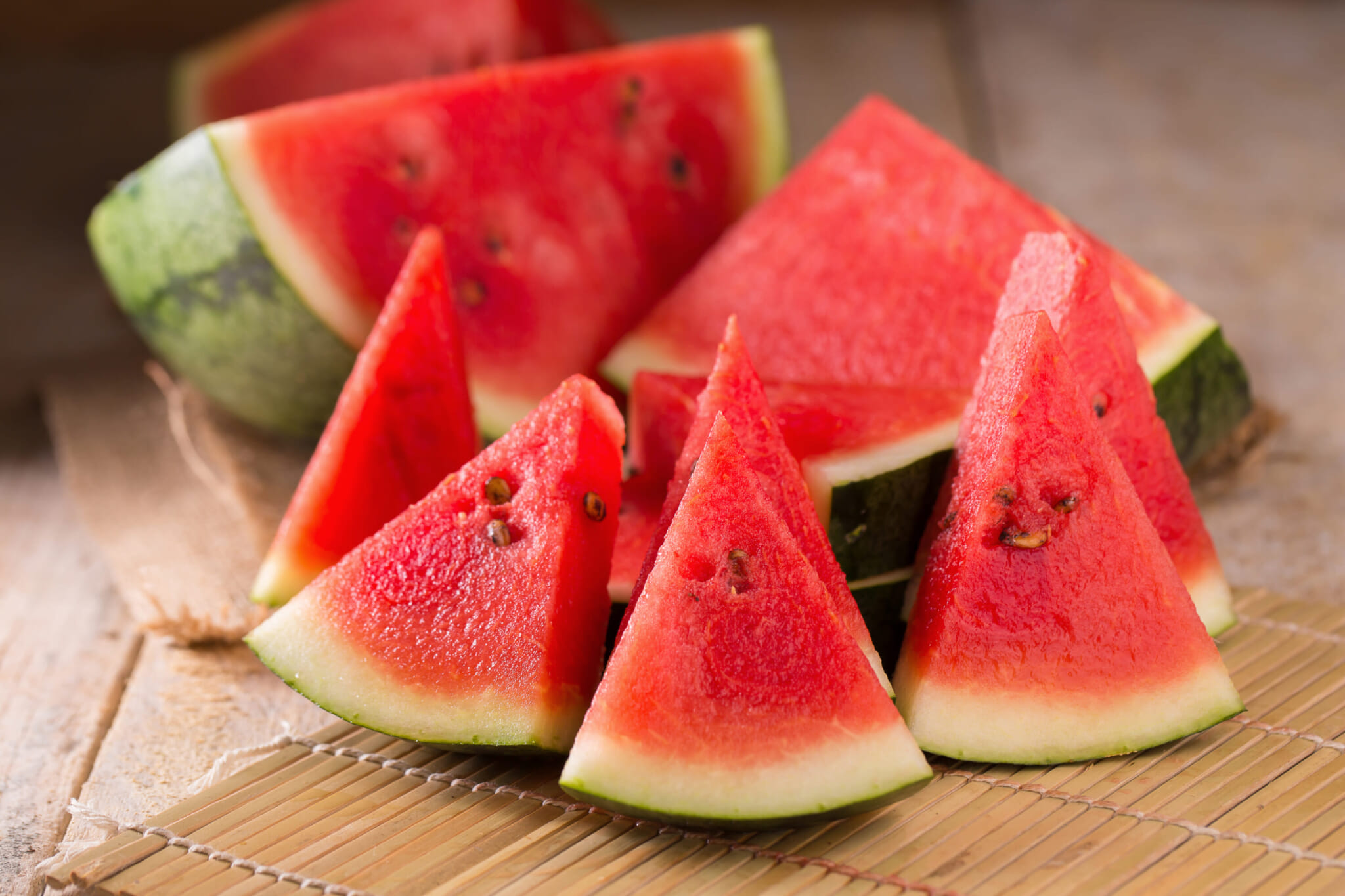
More Japanese Summer Guides
Is this your first summer in Japan? Stay cool with our handy guides:

